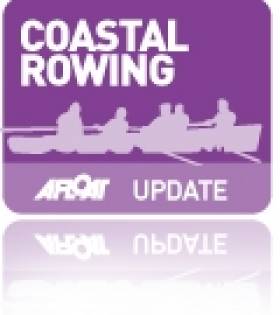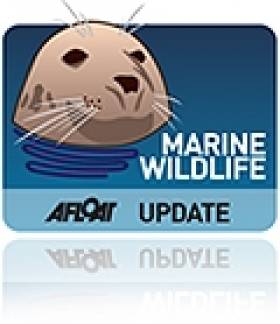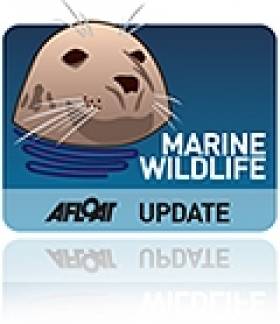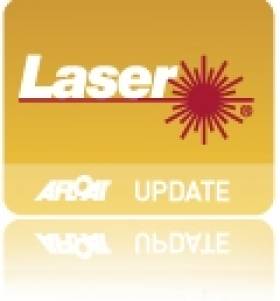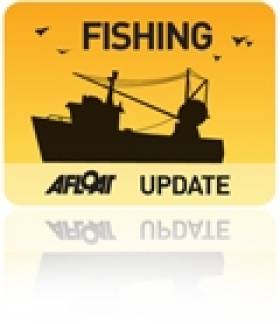Displaying items by tag: irish sea
Cold Wind, Huge Swells, Blisters, Exhaustion, Elation...The Toughest Celtic Challenge Ever
#COASTAL ROWING – During the May bank holiday weekend (4th-6th May), 12 men and women of St Michael's Rowing Club, Dun Laoghaire, participated in the biennial rowing race across the Irish Sea known as 'the Celtic Challenge'. It turned out to be what is widely regarded as the toughest crossing in the race's 19 year history, with just 12 of the 23 teams entered crossing the finish line unaided. St. Michael's finished 12th in the longest time ever taken for the 150km course – 27hrs, 18 mins, 21 seconds. The relay race is billed as the longest 'true' rowing race in the world and is listed as such in the Guinness Book of Records.
The run up to the event was challenging in itself with the team working tirelessly to secure a replacement support boat due to damage to the mast of the yacht that had already been confirmed. With just two days to departure, all the pieces of the puzzle were in place.
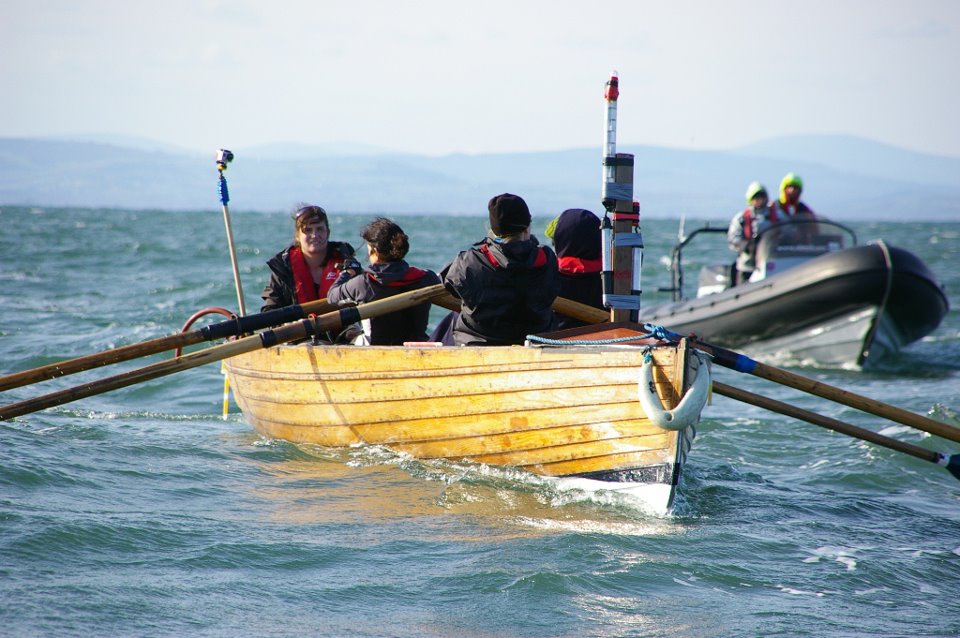
Pushing hard with a safey RIB keeping a watchful eye
Due to poor weather conditions, the race was postponed a number of times and eventually set off from Arklow, Co. Wicklow on Saturday 5th May at 4pm. Very soon after the start, the team from Bray Rowing Club who were rowing the only other traditional east coast skiff in the race had pulled out due to damage to their support boat, meaning that St. Michael's were the only wooden boat left in the race.
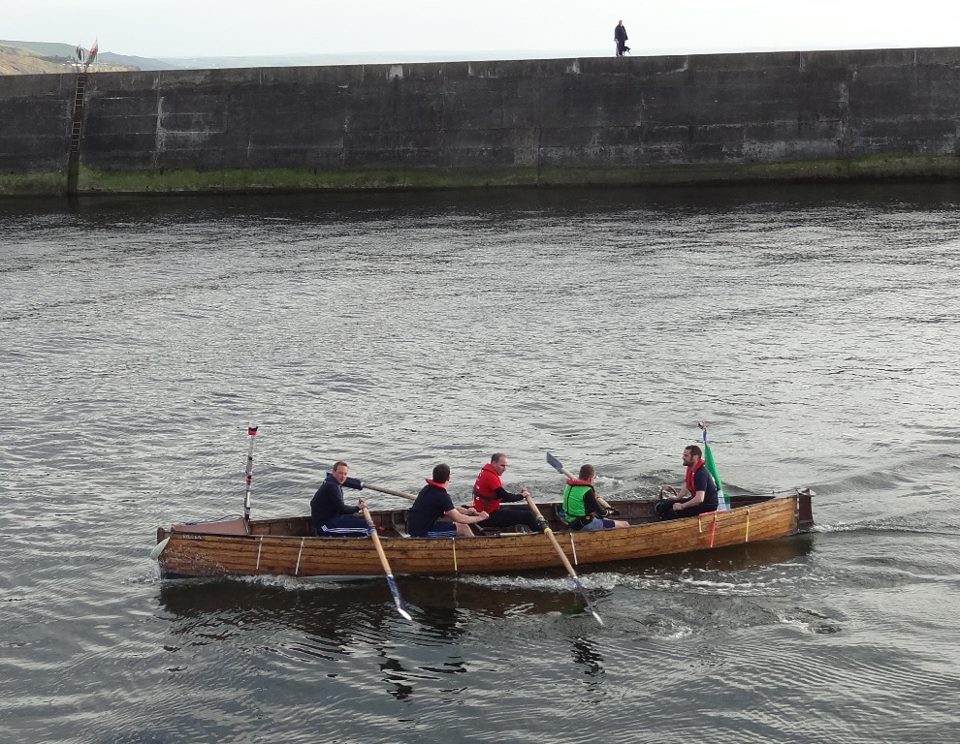
Over the line in Aberystwyth
The format of the race is a relay. Each team has 3 crews of 4 rowers that rotate their time on the oar, resting and refuelling on an accompanying support boat. Generally 'one hour on, two hours off' is the rule of thumb, but conditions, strategies, injuries, and sickness may dictate otherwise. The first 6 hours were the toughest and most challenging physically, as the northeast wind and swells created extremely challenging conditions for the participating rowers. The start was choppy and the Arklow Bank lived up to its reputation of being an extremely tough obstacle, but St. Michaels' quarter-ton clinker built skiff was well suited to the conditions. The solid wood oars used are three times heavier than carbon fibre equivalents used by all other teams, requiring strength and a particular technique even in normal conditions.

Exhausted but delighted
As the sun set, the crew knuckled down to what would be a tough, night-time row with changes of crew every hour. Their support yacht, the Helcia and the crew of the rib, the Wizard worked tirelessly to ensure the safety of the teams during the changeovers, both crewed by quite remarkable and extreme professionals, who gave freely of their time to the cause and to whom the club is eternally grateful. Working in two to three metre swells made rowing tough, and required 100% concentration and complete focus.
As the sun rose, it was clear the race was going to be a long one. Extreme conditions overnight meant teams hadn't travelled the distance they expected and knew they had to dig deep and work very closely as a unit to ensure spirits were kept high. As the changeovers continued and the hours flew by, the crew could see land, and somewhere in the distance was Aberystwyth. At this point, news of the night's retirements began to filter through on the VHF radio, with tales of other teams forced to pull out or turn back due to reasons including mechanical failure of support boats, sea sickness, damaged boats, lost rudders, and so on.
The final changeover was made at around 6.30pm on Sunday, and the pier could be clearly seen with cheering voices being carried on the wind. On the slip after the finish, the organisers and other crews were clearly impressed with the 30-year old 'Eileen' and her brave crew. At the awards ceremony the following day, St. Michael's became the first Irish team to be awarded the prestigious 'Spirit of the Celtic Challenge' trophy, which is given to the team which displays the greatest amount of endeavour when completing the course. This was a very proud moment for all the team as well as their friends, family, and all their clubmates back home in Dun Laoghaire.
First time Celtic Challenger was Wales born Gareth Whittington, now living in Dun Laoghaire told us, "I was told you never know what to expect as each Celtic Challenge is different because of the changing weather conditions, but I cannot and will not ever forget the way we pulled together as a team to ensure we got to Aberystwyth, an remarkable achievement".
Camaraderie between the Welsh and Irish clubs and teams involved is huge, but the team's thoughts that weekend were with the teams that did not make it, particularly their fellow Irish teams from Bray Rowing Club, Team Marie Keating, Ferrycarrig Rowing Club, and Airport Police and Fire Service Rowing Club. Congratulations are also due to the other Irish teams who crossed the finish line, Courtown, Foyle, and Arklow Rowing Clubs, the latter two of which won their respective categories.
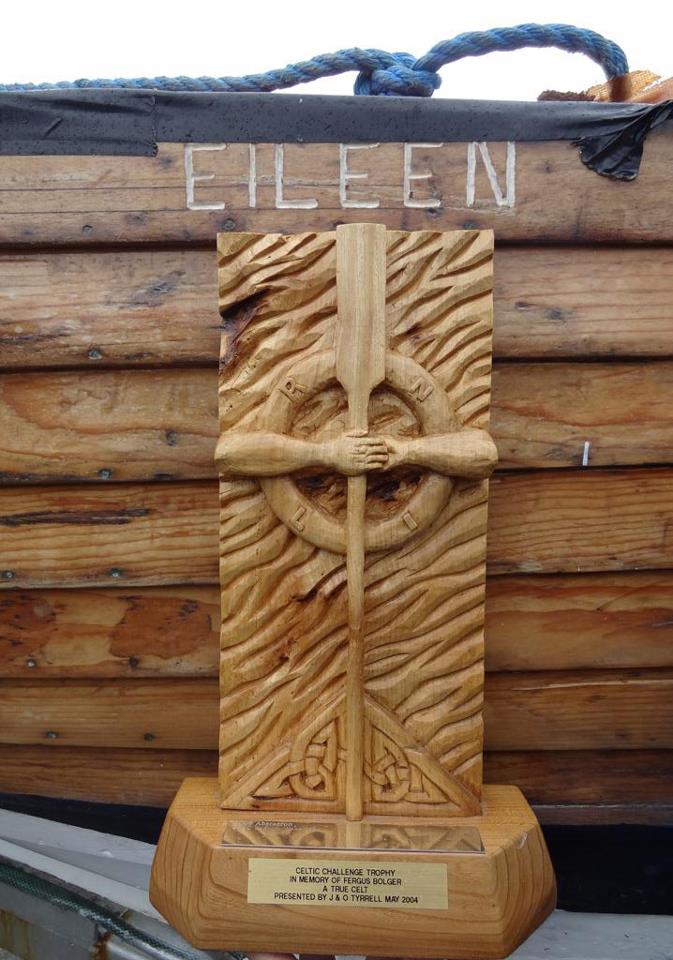
Spirit of the Celtic Challenge Award
St. Michael's participated in the Celtic Challenge to actively seek sponsorship, in a drive to raise funds towards new clubhouse facilities in Dun Laoghaire Harbour. Currently, the club lacks space to store their three wooden boats, space for indoor training, and is without changing facilities for the men, women and children who row for the club. It is hoped that the money raised can be put towards achieving this long-standing goal and keep the club's traditions and the tradition of the Celtic Challenge alive.

St. Michael's 2012 Celtic Challenge crew
Blind Adventurer and Sailor Team Up for Irish Sea Challenge
#ADVENTURE – This summer blind adventure-athlete Mark Pollock and local sailor Tiffany Brien aim to sail across the Irish Sea in order to raise funds for the Mark Pollock Trust and Belfast Lough Sailability.
Sailing across the relentless Irish Sea would be challenging enough for a regular sailor but 36-year-old Mark, who has been blind since 22, was also paralysed in a freak accident in 2010. That makes their crossing quite a significant challenge.
Luckily Mark is not shy of a challenge as during the last decade he has competed in the harshest environments on the planet. He survived sub-zero Antarctic temperatures to become the first blind person to reach the South Pole. He suffered in scorching heat, running six marathons in the Gobi Desert in one week. He has completed The North Pole marathon, raced through the desert lowlands of the Syrian African Rift Valley to the Dead Sea and competed at high-altitude in the Everest Marathon.
Mark has competed against professional explorers like Sir Ranulph Fiennes, Olympic gold medalists and Special Forces personnel; all able-bodied athletes. And he did so in a world of total darkness. After a life threatening fall two years ago, Mark is now competing against his spinal cord injury. Paralysed from the waist down, Mark's aim is to defy the odds to walk again.
The Mark Pollock Trust hopes to raise funds to assist with the capital and on-going costs specifically associated with Mark's spinal injury – including a team of care specialists, physiotherapy equipment, visits to Spinal Injury recovery centres and wheelchairs.
Mark states: "This will be my first big physical challenge since I was paralysed so I am really looking forward to giving it my best shot. I used to sail before my accident so I can't wait to get back out on the water."
The challenge is scheduled for the beginning of June and Mark and Tiffany will be sailing a specially-adapted SKUD yacht (the new Paralympic class) which Tiffany purchased for the Belfast Lough Sailability charity following her solo sailing challenge in 2007.
Tiffany comments: "Mark is a real inspiration so I am honoured to have the chance to participate in this challenge alongside him. His determination is infectious and I have no doubt we will achieve our goal of crossing the Irish Sea to raise valuable funds for the Mark Pollock Trust and Belfast Lough Sailability."
Belfast Lough Sailability helps people with disabilities learn new skills, enjoy the freedom of sailing, and potentially achieve their ultimate goal of reaching the Paralympic Games.
Sponsors of the Mark Pollock Irish Sea Challenge include, Belfast Harbour, BTWCairns, Priory Press, Navigator Blue Ltd and Eyekiller.
To support the Mark Pollock Irish Sea Challenge you can donate online at www.irishseachallenge.co.uk.
#MARINE WARNING - The latest Marine Notice from the Department of Transport, Tourism and Sport (DTTAS) advises on cable laying operations in the Irish Sea commencing today 22 April.
Following preliminary work on the East-West Interconnector power cable earlier this month, as previously reported on Afloat.ie, cable laying works will be undertaken by AMC Connector (call sign LAKY7) for a duration of approximately 18 days, subject to weather delays.
Operations will involve deployment of cable and ROVs which will restrict the vessel’s ability to manoeuvre.
The vessel will operate on a 24-hour basis, displaying appropriate day shapes and lights during operations, and will transmit an AIS signal. The vessel will be keeping a listening watch on VHF Channel 16 at all times during the operations.
All vessels, particularly those engaged in fishing, are requested to give the AMC Connector a wide berth.
Complete details including co-ordinates of the work area are included in Marine Notice No 20 of 2012, a PDF of which is available to read and download HERE.
Cardigan Bay's Dolphins Take Winter Breaks in the Isle of Man
#MARINE WILDLIFE - The famous dolphins of Cardigan Bay have been found to cross the Irish Sea to spend their winter holidays in the Isle of Man, WalesOnline reports.
New evidence uncovered by researchers at the Cardigan Bay Marine Wildlife Centre (CBMWC) confirms that dolphins from the New Quay area on the Welsh coastline have been photographed over the winter hundreds of miles north by conservationists in Douglas.
As many as eight vacationing cetaceans have been identified by matching markings on their dorsal fins, with one being a regular visitor since 2005.
“We’re really excited about this because it confirms how far the Cardigan Bay dolphins roam in the winter months when we see fewer of them at New Quay – knowledge we need to have if we’re to protect them successfully," said CBMWC science officer Sarah Perry.
Cardigan Bay is home to Europe’s largest population of bottlenose dolphins and is one of the last remaining places in the UK where the species thrives.
WalesOnline has more on the story HERE.
Fishguard Marina Gets Green Light as 450-Berth Plan Approved
#MARINA NEWS - Outline planning permission has been granted for a new 450-berth marina in Fishguard, according to BBC News.
An 80-acre site comprising much of the south side of the harbour, near the Stena Quay used for ferry services across the Irish Sea to Rosslare, will be home to the new development that will also include 250 apartments and a number of shops and restaurants, and is expected to make a "significant" contribution to the local economy.
A light industrial area with a boatyard and workshop are part of the plans, as well as two breakwaters to protect the development from waves in Fishguard Bay.
The marina scheme will also feature a visitors centre, after discussions with local community conservation group Sea Trust and other parties.
Local politicians and business leaders are supportive of the scheme's potential to generate jobs and tourism. But residents have expressed concern at the scale of the development, fearing it will create an "enclave" for the boating community that will not be integrated with the town proper.
BBC News has more on the story HERE.
Water Users Speak Out Over UK Marine Conservation Proposals
#MARINE WILDLIFE - Sailors, fishermen and SCUBA divers in England's West Country could face "tough new restrictions" if plans for conservation zones in the Irish Sea and around the UK coast go ahead.
According to This Is Cornwall, groups representing water users argue that marine protection plans "would have severe knock-on effects on those who rely on the south west's coastline for employment and leisure".
Alana Murphy of the Royal Yachting Association said: "A lot of the small inshore areas proposed as conservation zones coincide with estuaries and bays that are used by sailors for mooring, or for laying buoys for racing. We are concerned we could lose important sailing areas."
Companies involved in offshore renewable energy have voiced their concerns on the impact of marine reserved on their development, while the National Federation of Fishermen's Organisations added that the scale of proposed fishing reserves was too great, and could potentially push commercial fishermen "to other areas which will then get overfished".
As previously reported on Afloat.ie, the UK's Wildlife Trusts have expressed dismay that plans to establish Marine Conservation Zones in the Irish Sea and elsewhere have been shelved till at least next year after pressure from fishermen, boaters and other groups.
UK Laser Sailors in £50K Irish Sea Crossing Challenge
#LASER - A pair of British sailors are set to embark on an intrepid crossing of the Irish Sea using just two single-handed Laser dingies.
David Summerville and Steve Cockerill had originally planned to make the crossing in September last year, but those plans were scuppered by 50-knot gale force winds and a 12-foot tidal swell, according to Incentive Travel.
But the duo is now planning to try again, with the backing of the Ramada Plaza Southport.
“David and Steve will be covering 115 nautical miles during the challenge," said Ramada Plaza general manager Enda Rylands. "They will set off from my own home town of Dublin and finish in Southport, aiming to raise £50,000 for mental health charity Mind and the John Merricks Sailing Trust."
Summerville, a 53-year-old grandfather of two who runs a boat repair business, said the date of the challenge would again depend on weather and tidal conditions, and that the pair is ready to depart any time from mid-April to mid-September.
It's not the first time that an Irish Sea crossing has been done in a Laser as Tiffany Brien achieved the feat in 2010, sailing single-handedly the 30 miles from Portpatrick in Scotland to Belfast Lough.
But Summerville and Cockerill's ambitious undertaking, at more than three times that distance, would surely get them a place in the record books - provided the weather goes their way!
Marine Notice: East-West Interconnector Works in Irish Sea
#MARINE WARNING - The latest Marine Notice from the Department of Transport, Tourism and Sport (DTTAS) advises on preliminary work on the East-West interconnector power cable in the Irish Sea between Ireland and Wales over the next few weeks.
Briggs Marine commenced pre-lay grapnel runs along the line of the cable route on Sunday 1 April, and this work will be carried out over three weeks from the vessel Kingdom of Fife (call sign 2BKR2).
This work will continue on a 24-hour basis, and the vessel will display appropriate day shapes and lights as required, with a continuous watch on VHF Channel 16 and DSC.
Complete details including co-ordinates of the work area are included in Marine Notice No 14 of 2012, a PDF of which is available to read and download HERE.
Pioneering Programme for Isle of Man Scallop Fishery
#FISHING - Conservationists and the fishing industry have joined forces in a new venture to evaulate the state of the Isle of Man's scallop fishery, as the Guardian reports.
Both sides will co-manage the 35-square-mile Ramsey marine nature reserve in the Irish Sea, collecting data to show what progress the scallops have made since fishing in the area was banned in 2009.
It is hoped that the study will lead to a renewing of leases for scallop fishing, which is worth up to £12 million annually to the Isle of Man's economy - though industry leaders have doubts that the new arrangement will serve the island's fishermen.
Some 2.6% of Manx waters are protected, with more than 1% 'highly protected', which is in stark contrast to the rest of the United Kingdom after plans for a national network of conservation zones were shelved till at least next year.
The Guardian has much more on the story HERE.
Killer Whale Pair Spotted Near Kinsale
#MARINE WILDLIFE - Two killer whales have been spotted near Kinsale in recent weeks, the Irish Whale and Dolphin Group (IWDG) reports.
Two separate sightings of the orca pair near Barry's Head have been confirmed by the group, via photos provided by John Murphy and Richard Cussen on 5 March, during what is normally the 'low season' for whale watching in Ireland.
The pair comprises one adult male and a smaller whale which is likely an adult female. It is not yet known, however, whether the whales are new to Irish or Scottish waters.
According to the IWDG's Pádraig Whooley, it is "interesting that they have stayed close to their original position and suggests they may have found 'rich pickings'".
In other news, the Whale and Dolphin Roadshow will be at the Galway Shopping Centre from 22-25 March in time for the European Cetacean Society Conference.
The roadshow "is a fantastic opportunity to learn more about whales, dolphins and porpoise of the ASCOBANS region" that encompasses the Baltic Sea, Northeast Atlantic and Irish and North Seas.


























